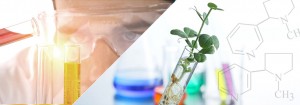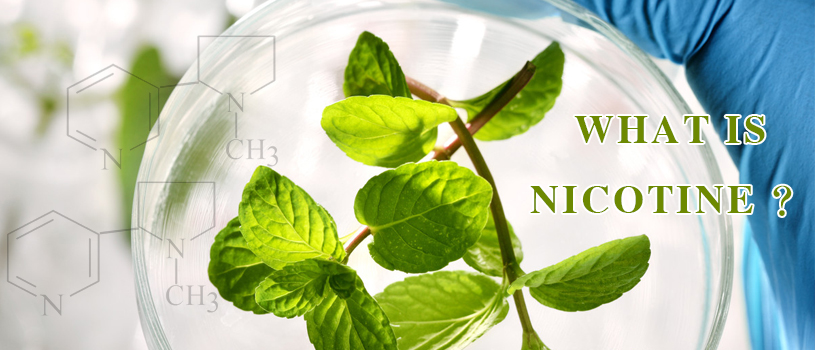As a Vaper you probably heard the word “NICOTINE” as much as E-liquid or E-juice or E-cigarettes, — and all its accompanied pros and cons. But what is it really?
Let’s make an introduction to nicotine:
A family rich in alkaloids. About 5 percent (by weight) of the tobacco plant is nicotine (C10H14N2),
A naturally occurring liquid alkaloid. An alkaloid is an organic compound made out of carbon, hydrogen, nitrogen and sometimes oxygen and it can have potent effects on the human body. The morning cup of coffee you enjoy, for instance, contains another type of alkaloid: caffeine. Cigarettes typically contain about 10 milligrams of nicotine (sometimes up to 20 milligrams, depending on the brand); when you smoke a cigarette, about 1 to 2 milligrams get absorbed by your body.
Meanwhile, in Electronic Cigarettes, the e-liquid where you get your refill to Vape can contain 3 milligrams of nicotine up to 36 milligrams (depends on personal usage). The regular nicotine content is at 12milligrams to 18 milligrams and based on the study conducted Ecigarette Research Advocates Group, the results showed that nicotine absorption from e-cigarettes was significantly lower compared to tobacco cigarettes.
Little bit of history:
Nicotine was isolated from tobacco leaves (Nicotiana tabacum) in 1828, but the powerful effects of nicotine were already well recognized. The tobacco plant is native to America and its use as a medicine and stimulant goes back at least 2000 years and most likely many millennia before that and It was not until 1994 that the U.S. Food and Drug Administration officially determined that nicotine was a dependency-producing drug. The U.S. Supreme Court subsequently ruled that the FDA could not regulate nicotine as a drug.
However, all this attention did encourage legal action that resulted in the tobacco companies paying billions of dollars to cover health care costs of tobacco-related diseases. On June 22, 2009, President Obama signed the Family Smoking Prevention and Tobacco Control Act, landmark legislation that gives the U.S. Food and Drug Administration authority to regulate the manufacturing and marketing of tobacco. While tobacco consumption is declining in North America and parts of Europe, it continues to increase in many parts of the world. For instance Developing countries in general and China in particular but that’s another story.
 Before electronic cigarettes rises in the year 2005 Nicotine is already well known among scientist and agricultural professionals because of its use as an insecticide. One reason for the rapidly growing market that developed for nicotine products was that entomologists and veterinarians who joined agricultural pest-control agencies relied more and more on the products in the fight against increasing infestations. They suggested that the sources of tobacco then available be improved. Tobacco solutions that once were poured away after having served their purpose in tobacco factories were reclaimed and sold for insect control. The effective control of sheep mites and ticks with nicotine dips created a large market for nicotine products. Outbreaks of the parasites during the 1890’s brought about federal regulations in the United States and made sheep dipping mandatory for interstate shipments. Important markets for nicotine had also been developed in other sheep growing areas. The chemist and chemical engineer were brought into the tobacco business in order to manufacture concentrated products more efficiently. The expanding demand for nicotine caused the development of methods for recovering the alkaloid from tobacco extracts. The alkaloid was removed in whole or in part from such extracts, which thereby improved in quality because nicotine was neither desirable nor required in flavoring extracts. Continued progress was made in purifying and concentrating the insecticide product.
Before electronic cigarettes rises in the year 2005 Nicotine is already well known among scientist and agricultural professionals because of its use as an insecticide. One reason for the rapidly growing market that developed for nicotine products was that entomologists and veterinarians who joined agricultural pest-control agencies relied more and more on the products in the fight against increasing infestations. They suggested that the sources of tobacco then available be improved. Tobacco solutions that once were poured away after having served their purpose in tobacco factories were reclaimed and sold for insect control. The effective control of sheep mites and ticks with nicotine dips created a large market for nicotine products. Outbreaks of the parasites during the 1890’s brought about federal regulations in the United States and made sheep dipping mandatory for interstate shipments. Important markets for nicotine had also been developed in other sheep growing areas. The chemist and chemical engineer were brought into the tobacco business in order to manufacture concentrated products more efficiently. The expanding demand for nicotine caused the development of methods for recovering the alkaloid from tobacco extracts. The alkaloid was removed in whole or in part from such extracts, which thereby improved in quality because nicotine was neither desirable nor required in flavoring extracts. Continued progress was made in purifying and concentrating the insecticide product.
Before 1880 tobacco flavoring sauces and home-made tobacco extracts were in general use. In 1881 extracts carrying 2 to 3 percent nicotine were offered. The alkaloid content was increased to 6 and 10 percent by 1885. A 40-percent solution of free alkaloid appeared in 1895: an 80-percent solution, primarily for greenhouse use, was put out in 1898. Nicotine sulfate appeared in 1900, first with 10 percent alkaloid and later with 40 percent. It has since become the standard nicotine solution of the agricultural trade. Nicotine tannate appeared in 1929 as the first fixed nicotine compound. It was followed in 1933 by nicotine bentonite. The alkaloid of 99.9 percent purity was offered for commercial use in 1940.
Conclusion:
Some expert says if it weren’t for nicotine, people wouldn’t smoke tobacco. Why? Because of the more than 4,000 chemicals contained in the tobacco smoke, nicotine is the primary one that acts on the brain, altering people’s moods, appetites, and alertness in ways they find pleasant and beneficial. As the noted tobacco researcher M.A.H. Russell once wrote:
“There is little doubt that if it were not for the nicotine in tobacco smoke, people would be little more inclined to smoke than they are to blow bubbles or to light sparklers.”
Unfortunately, as it is widely known, nicotine has a dark side: It is highly addictive. Once smokers become hooked on it, they must get their fix of it regularly, sometimes several dozen times a day. Cigarette smoke contains 43 known carcinogens, which means that long-term smoking can amount to a death sentence. In the CHINA alone, more than 2 millions Chinese die every year from tobacco-related illnesses.
Nicotine may give the users certain satisfaction they need and feed the cravings, however it is important to remember that what is in excess brings harm. As per the use of nicotine in E-liquid, we always suggest to our end users to choose the lowest concentration of nicotine possible to be able to enjoy the flavors to the fullest. web analysis The same applies in DIY-ing E-liquids; it is a must not to sacrifice the flavors for a higher nicotine level. Smart nicotine use is the answer for an enjoyable and Fruitful Vape Journey.

